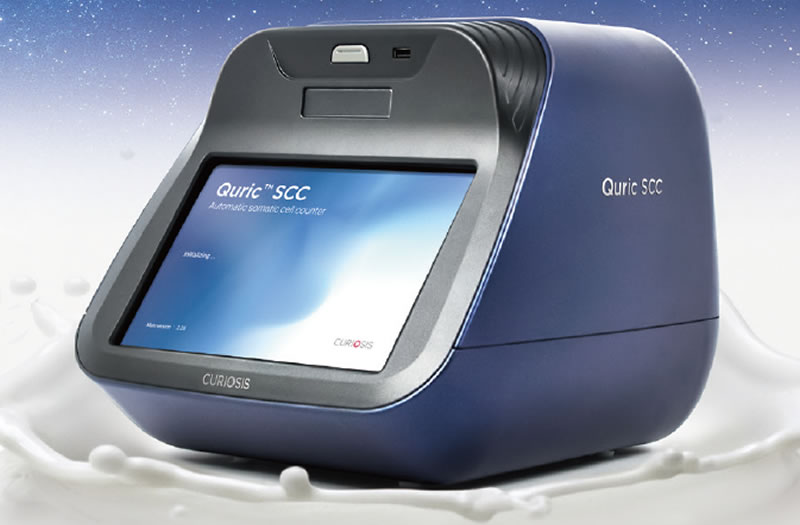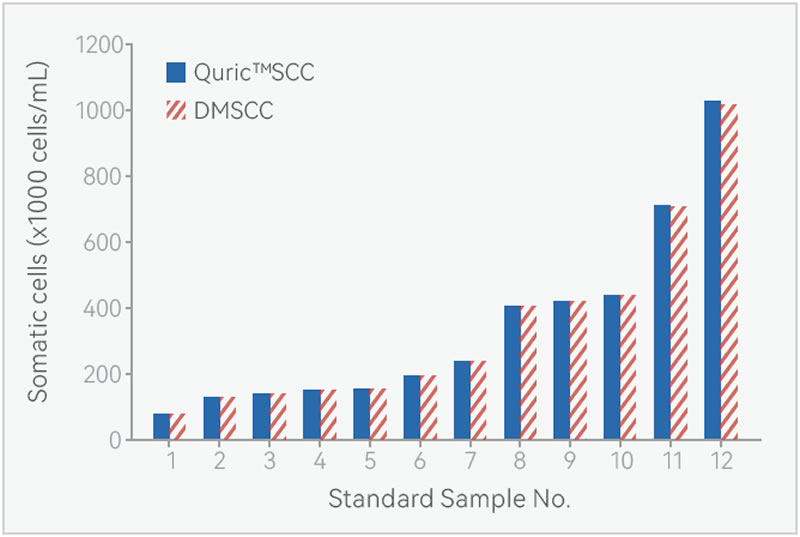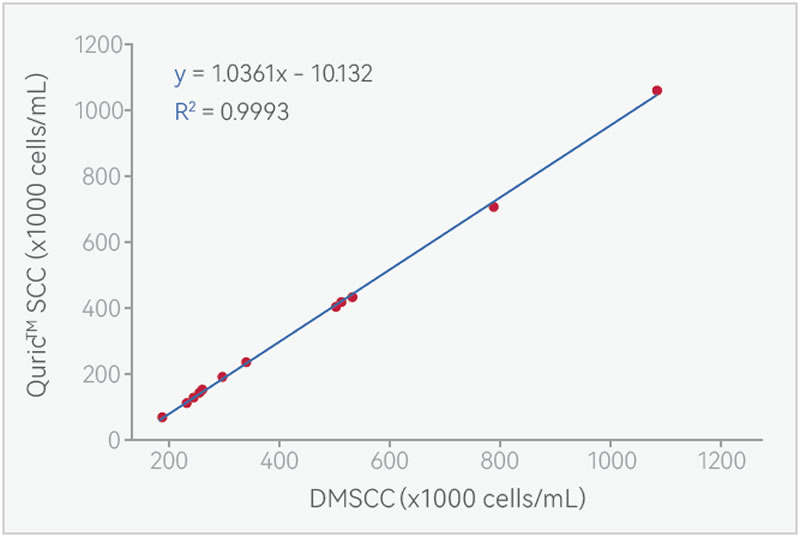Quric™ SCC is a fully automated cell counting system that improves dairy quality control system.

Somatic cell count is one of the most important indicators for assessing milk quality and represents the health of cows' breasts.Designed for detecting somatic cells in raw milk, Quric™ SCC is a useful system for implementing milk quality control, helping to seek a higher quality milk source.With its precise, reliable and fast detection technology, Quric™ SCC is the ideal system for dairy plants, small laboratories and veterinary institutions that handle somatic cell monitoring and analysis.
Accuracy & consistency of results
The data shown below show that Quric™ SCC provides accurate and consistent results, fully compatible with Direct Microsomal Cell Count (DMSCC).
● Accuracy
Comparison between QuricTM SCC and DMSCC was performed using raw milk standards (US Eastern Laboratory Service).

●Linear
Linear data correlation between QuricTM SCC and DMSCC.

●Stability
| means cc (small 1000 cells/ml) | CV*(%) |
| 100 | 4% |
| 250 | 3% |
| 700 | 2% |
| 1000 | 2% |
Quick detection
By using QuricTM SCC, users can obtain count results in seconds, allowing them to detect and prevent mastitis earlier.
● Counting method
| Measurement range | 1×104~5×106 cells/mL |
| Measurement speed | About 35 seconds/channel |
| Measure volume | 7.6μL |
| Sample loading volume | 20μL |
| Data Export | Wi-Fi, USB, Thermal Printer (optional) |
●Instruments
Dimensions (width × length × height) | 300×360×275mm |
weight | 7.5 Viewed |
light source | Green LED |
Objective lens | 4X |
Display | 10.1 inch touch screen |
Focus | Automatic focus, manual focus |
| SCC Kit | 4-channel disposable counting plate (25 pieces); SCC staining solution (12mL) |
User-friendly operating system
● Easy to operate
Somatic cell counting (SCC) using QuricTM SCC takes three steps.

● Various data export methods
The count results can be exported to PDF or CSV file formats, and users can obtain data through USB, email (Wi -Fi), or thermal printers.

●Scan the barcode
Users can use barcodes to set sample IDs and perform simple data analysis.(Optional)

Origin: South Korea Curiosis